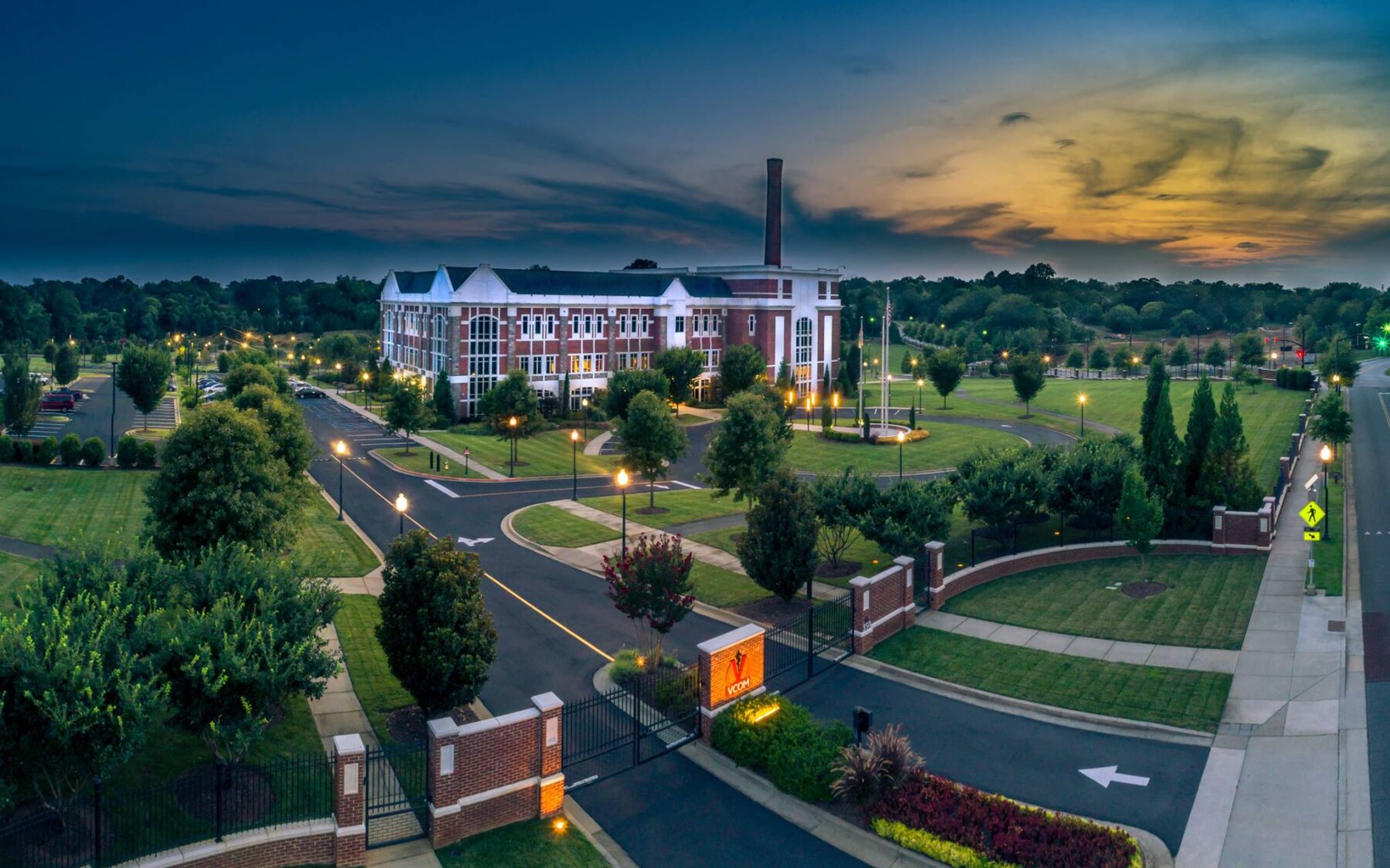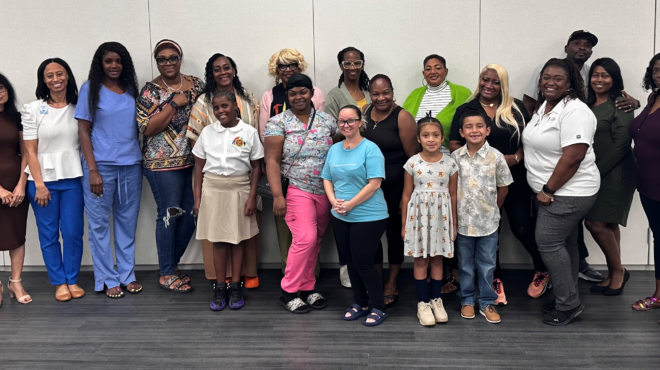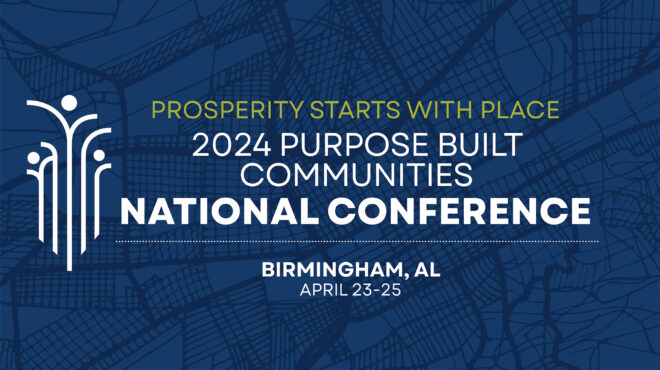Even before the school opened last fall, it struck a match for the future of the Northside neighborhood, and city leaders moved quickly to shovel coal into the potential economic engine’s fire.
In 2010, a “think tank,” the Northside Advisory Committee led by former Mayor Bill Barnet, organized to take the lessons learned from the revitalization of the south side and build similar momentum and interest there. From that, the city and community partners would raise hundreds of thousands of dollars to purchase rundown, abandoned homes — but that’s only the first step in a long journey toward revitalization.
“VCOM’s decision to locate where it did — they could’ve gone anywhere — caused us to think about the Northside, and the timing was critical because if we didn’t take advantage of the potential, we might not get it back,” City Manager Ed Memmott said.
Combating crime
The challenges on the Northside are clear: a high concentration of vacant and rental housing became dilapidated after the mill closed in 2001, high unemployment and poverty, high crime rates and virtually no access to health care services and nutritious foods.
“I was one of those people who had doubts about whether this was achievable, but when I drove down that street and saw VCOM, I saw what was possible,” said Mary Thomas, executive vice president of the Spartanburg County Foundation.
From the late 1990s to 2005, the Northside was plagued with property, drug-related and violent crimes, said Public Safety Director Tony Fisher, a member of the advisory committee.
“Crime really follows socioeconomic conditions, and at that time, there were a lot of absentee landlords, a lot of blight,” Fisher said. “You have a large apartment complex (Oakview Apartments) with a lot of unemployment. … The concentration of poverty creates an opportunity for crime.”
During the last five years, the number of crimes reported in the Northside has fallen 40 percent, a trend Fisher attributes to the city’s weed-and-seed program that “weeds” out crime and “seeds” community services — which started in 2007 — and improved resources at Cleveland Elementary School.
“Spartanburg gets it,” Fisher said. “By improving the social conditions, you have a reduction in crime.”
The city — and its partners — realized early that the Northside had strategic advantages because of its close proximity to key places — VCOM, downtown, Wofford College and Spartanburg Regional Medical Center. Leaders from the college, hospital and the Mary Black and Spartanburg County foundations serve on the committee and each — along with the city — contributed $250,000 toward the Northside Development Corp., a not-for-profit charitable group formed to combat blight by purchasing vacant and dilapidated houses and empty lots. The corporation has about $2 million in assets — including $250,000 each from the city, SRHS and the two foundations, and the remainder from local philanthropists — to purchase properties and develop the Northside.
Through the years, the city has purchased a number of lots in the area using Neighborhood Stabilization Program funds, a federal program that helps cities improve neighborhoods in distressed areas. Together, the city and development corporation have purchased more than 100 homes, though no owner-occupied houses were bought, Assistant City Manager Chris Story said.
Improving education
Barnet, the former mayor, and project manager Curt McPhail looked at strategies used by other communities that had been successful in revitalizing areas and found quality, accessible education key to developing prosperous communities.
“If you’re going to change the Northside, you have to have education, but education can’t do it alone,” Barnet said. “They need partners. District 7 alone can’t make Cleveland a better institution. … A lot of kids feed into Cleveland, so if they don’t have proper housing, a stable environment at home, it puts stress on the education partners.”
Cleveland Elementary School serves about 420 students living on the city’s north side and has had low academic performance for years, due in large part to what education leaders call achievement and opportunity gaps. The school’s poverty index for 2011 was 98.9 percent, ranking the school as 29th among public schools in South Carolina.
In March, the District 7 school board agreed to restructure Cleveland and added five weeks to the beginning of the 2012-13 school year. They implemented a new leadership academy approach. The school will be rebranded as The Cleveland Academy of Leadership.
District 7 Superintendent Russell Booker said the district is committed to seeing academics improve at Cleveland and instilling in students a sense of pride in their school and community. He said the school plays an integral part in the success of the larger initiative in the Northside.
“As families start to settle in, one of the first things they look to is the schools. We want to make sure Cleveland is an attractive option for the current residents that are there and for anyone else looking to relocate in that area,” Booker said. “Our district is committed to making this work. I think we’re going to have, at the end of the day, the model in South Carolina for true change in the schools.”
Purpose Built Communities
In mid-April, organizers plan to announce a partnership with Purpose Built Communities, a nonprofit consulting firm based in Atlanta, as the masterplanning process begins. The process will include community meetings, at which Northside residents can address the area’s future.
Community buy-in is key for these projects, said Carol Naughton, senior vice president of Purpose Built Communities. The committee has stressed that community outreach is vital to the process.
Apart from communication and outreach, the Purpose Built strategy is based on three core components: mixed-income housing, strong schools and adequate community services, Naughton said.
She said that a strong lead organization is the “secret sauce” to a successful approach, and Spartanburg appears to have the right pieces in place to make this development process work.
“Spartanburg has a wealth of civic leaders who care so much about all the neighborhoods in Spartanburg, and you don’t necessarily find that level of commitment in every city of America,” Naughton said. “The Northside Development Corporation will create the space to allow other high-quality partners to do their work in a coordinated and cohesive way.”
City Community Services Director Mitch Kennedy said a community-based approach — one that’s not solely driven by the city — also will help attract federal dollars for the Northside effort.
The city and the Spartanburg Housing Authority plan to submit a federal Choice Neighborhood Planning Grant in May for the project. If successful, the planning grant could be used to leverage more federal grant dollars — similar to HOPE VI funds.
Those funds could be used to build affordable housing, giving current residents of the area opportunities to live alongside Wofford College professors, or VCOM students, for example.
“We do know that for the Northside to be successful, there are a few things that have to work,” Memmott said. “We have to have a successful Cleveland Elementary. We must have a mix of incomes, ethic diversity, age diversity. I think we can all agree the area needs to be bikeable, walkable. Those are sustainable things that we must have for this concept — in whatever form it takes — to work.”
Those involved in the process so far have no real, tangible idea of what the Northside will look like in 15 to 20 years. Most say they hope a new T.K. Gregg Community Center will be built somewhere in the area, though no particular location has been identified.
The Northside Healthy Food Hub will be built on three lots that front Howard Street and will open in April 2013. When completed, the compound will have a garden, a community kitchen and a cafe that sells nutritious, ready-made meals and fresh produce. It also will provide a permanent home for the Hub City Farmer’s Market.
Already momentum, and hope, for the future of the Northside is building, but Memmott said such a long-term endeavor will inevitably have disappointments and delays along the way.
“There are a lot of challenges,” Memmott said. “If we don’t get after it, if we don’t take advantage of the timing, the community may never change. We think the community can do it, but there’s a lot of work to do. There will be disappointments along the way. We’ll get sidetracked, but we’re committed to this.”
Story, the assistant city manager, said he’s encouraged by the enthusiasm from the community partners — Wofford College, VCOM, Spartanburg Regional, the two foundations, District 7 and other stakeholders.
“We know that good land planning will attract millions in private capital eventually,” Story said. “The cooperation we’ve gotten from the leaders in the community has been tremendous. That’s not something we take for granted.”
Staff writer Lee Healy contributed to this story.
By Lynne P. Shackleford
Staff writers









